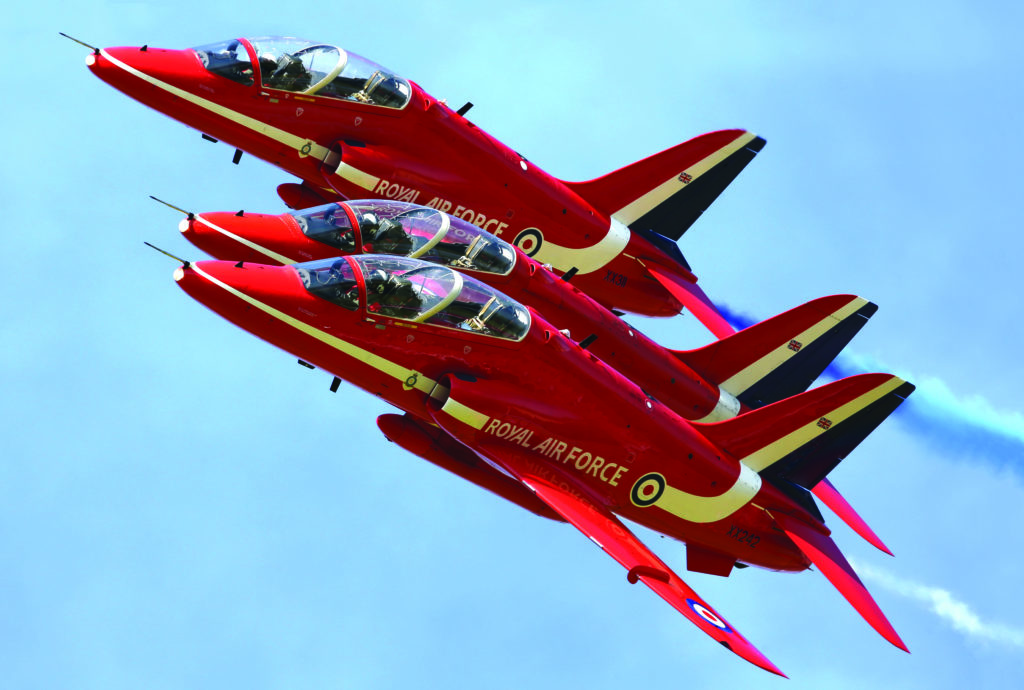On board the Hawk
by Scott Dutfield · 17/07/2020
The dual-control training jet that helps the next generation of pilots prepare for combat

Getting into the cockpit of a jet engine aircraft for the first time is a daunting prospect for any trainee pilot. After spending years learning the theoretical physics and basics of flying, the Hawk is the next stage in their training and their first real venture into the skies, in a working military jet.
The Hawk has played a key training role within the Royal Air Force (RAF) since the 1970s. Originally designed and constructed by Hawker Siddeley Aviation Limited (now known as BAE Systems) in 1971 and first flown in 1974, the Hawk promised a more agile way to fly. It replaced the Folland Gnat, a plane similar in weight and size. However, the Gnat’s cockpit only offered a single seat, leaving inexperienced pilots to fly solo. The Gnat saw the end of its training career in 1979 when the new, purpose-built Hawk T1 swooped in to take over.
What makes the Hawk unique for training the next generation of RAF pilots is its dual-control capabilities. Similar to the dual-control cars used by driving instructors, the two-man tandem cockpit enables a teaching pilot to sit behind their student and intervene when needed. For teaching the basics, the jet’s cockpit is relatively unchanged since the plane’s introduction to the Air Force. Pilots rely on dials, gauges and the view through the glass roof to navigate and fly the plane. However, BAE Systems has integrated multi-functional digital displays in the newer model, the Hawk T2.
Offering an introduction to fast jets, the Hawk is designed to reach Mach 0.88 during flight and Mach 1.15 during a dive. The Mach number relates to the jet’s speed when compared to that of sound (equal to Mach 1), so the Hawk can manoeuvre at speeds known as transonic, paving the way for pilot training on supersonic jets such as the F-35 Lightning II.
Although predominantly used as training jet, the Hawk has proven itself as a combat aircraft and has also been used for reconnaissance and surveillance. Currently, around 1,000 aircraft have been sold to 18 countries across the globe.
Aerial acrobats
Though they triumph as a training jet, the Hawk is most recognised as the type of plane seen flying in formation during a Red Arrows display. Originally sporting a black coat of paint, the newly introduced Hawk T1 had a red makeover upon joining the ranks of the Royal Air Force Aerobatic Team in 1979. Debuting synchronised sky routines a year later, the Hawk T1 proved its ability to perform stunning displays.
These gravity-defying stunts, however, can be limited by the weather. In order to carry out the iconic loops, the cloud base needs to be above 1,700 metres so the aircraft avoid entering it and disappearing from sight. If the clouds are lower than that, they’re limited to rolling displays, flypasts and steep turns.
This article was originally published in How It Works issue 124
For more science and technology articles, pick up the latest copy of How It Works from all good retailers or from our website now. If you have a tablet or smartphone, you can also download the digital version onto your iOS or Android device. To make sure you never miss an issue of How It Works magazine, subscribe today!





